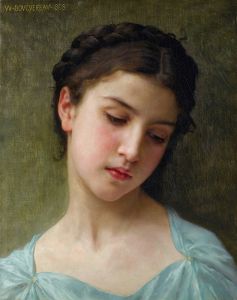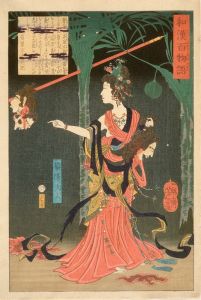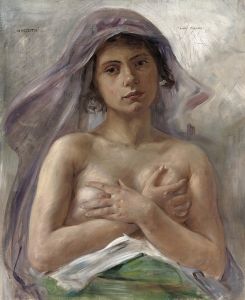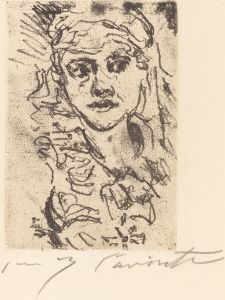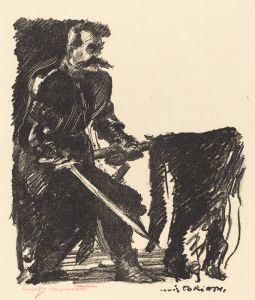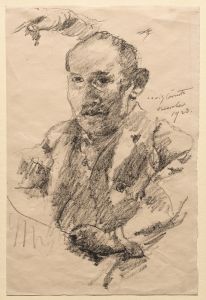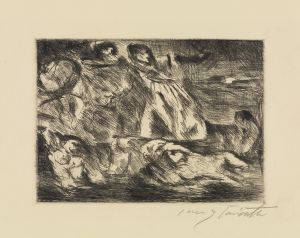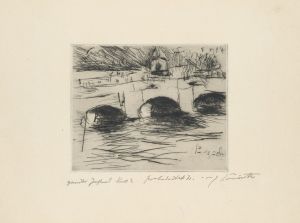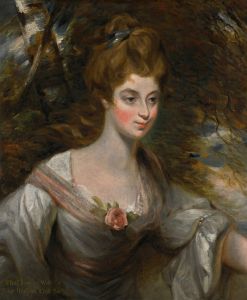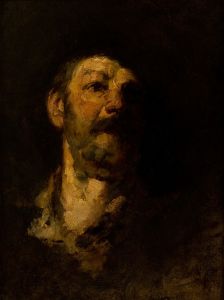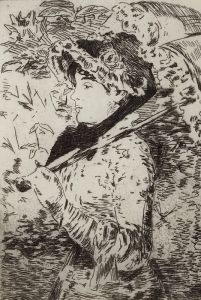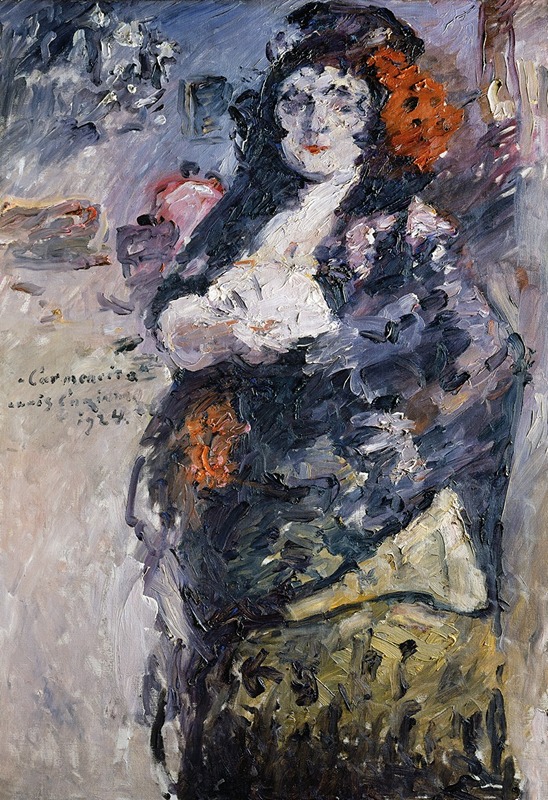
‘Carmencita’, Portrait of Charlotte Berend-Corinth in Spanish Dress
A hand-painted replica of Lovis Corinth’s masterpiece ‘Carmencita’, Portrait of Charlotte Berend-Corinth in Spanish Dress, meticulously crafted by professional artists to capture the true essence of the original. Each piece is created with museum-quality canvas and rare mineral pigments, carefully painted by experienced artists with delicate brushstrokes and rich, layered colors to perfectly recreate the texture of the original artwork. Unlike machine-printed reproductions, this hand-painted version brings the painting to life, infused with the artist’s emotions and skill in every stroke. Whether for personal collection or home decoration, it instantly elevates the artistic atmosphere of any space.
Lovis Corinth, a prominent German painter and printmaker, created the artwork titled "Carmencita, Portrait of Charlotte Berend-Corinth in Spanish Dress" in 1901. This painting is a notable example of Corinth's work during a period when he was transitioning from Impressionism to a more Expressionist style. Corinth is recognized for his dynamic brushwork and vibrant use of color, both of which are evident in this portrait.
The subject of the painting, Charlotte Berend-Corinth, was not only the artist's wife but also a significant figure in his life and career. Charlotte was an accomplished painter herself and a member of the Berlin Secession, an art movement that sought to challenge the conservative art establishment in Germany at the time. She often served as a muse and model for Corinth, and their partnership was both personal and professional.
In "Carmencita," Charlotte is depicted in a Spanish dress, which reflects the early 20th-century European fascination with exotic and foreign cultures. This interest was part of a broader trend in art and society, where artists and audiences were captivated by the allure of the "other." The choice of Spanish attire may have been inspired by the popular operatic and theatrical representations of Spanish culture, such as Bizet's "Carmen," which was widely celebrated during this period.
The painting captures Charlotte in a moment of poised elegance, her attire richly detailed with vibrant colors and intricate patterns. Corinth's brushwork is expressive, capturing the texture of the fabric and the play of light across the surface. The background is somewhat abstract, allowing the figure to stand out prominently, a technique Corinth often employed to focus attention on the subject.
Corinth's portrayal of Charlotte in this manner can be seen as both a personal homage and a reflection of the broader cultural currents of the time. The painting exemplifies Corinth's ability to blend personal intimacy with broader artistic trends, making it a significant piece within his oeuvre.
Throughout his career, Lovis Corinth was known for his ability to convey emotion and character through his portraits. "Carmencita" is no exception, as it not only showcases his technical skill but also offers insight into his relationship with Charlotte. The painting remains an important work for understanding Corinth's artistic development and his contribution to early 20th-century art.
Today, "Carmencita, Portrait of Charlotte Berend-Corinth in Spanish Dress" is appreciated for its artistic merit and historical significance. It is a testament to Corinth's evolving style and his ability to capture the essence of his subjects. The painting continues to be studied and admired by art historians and enthusiasts alike, serving as a window into the dynamic world of early modern European art.





